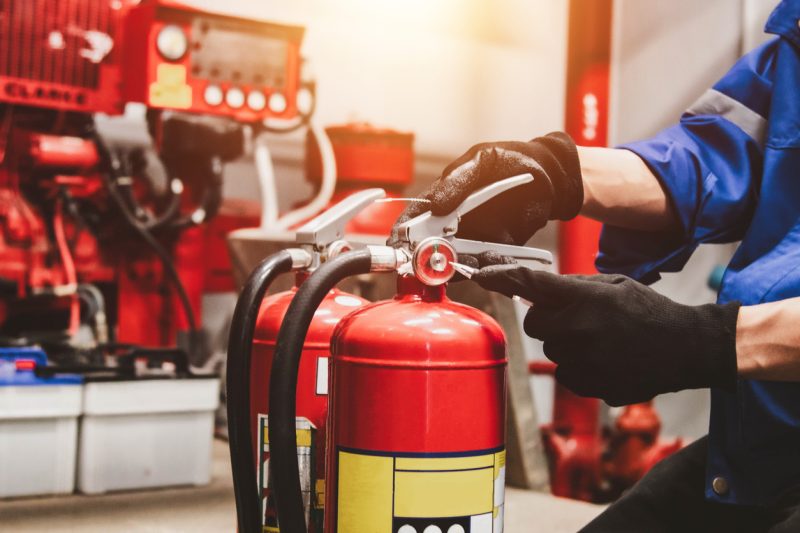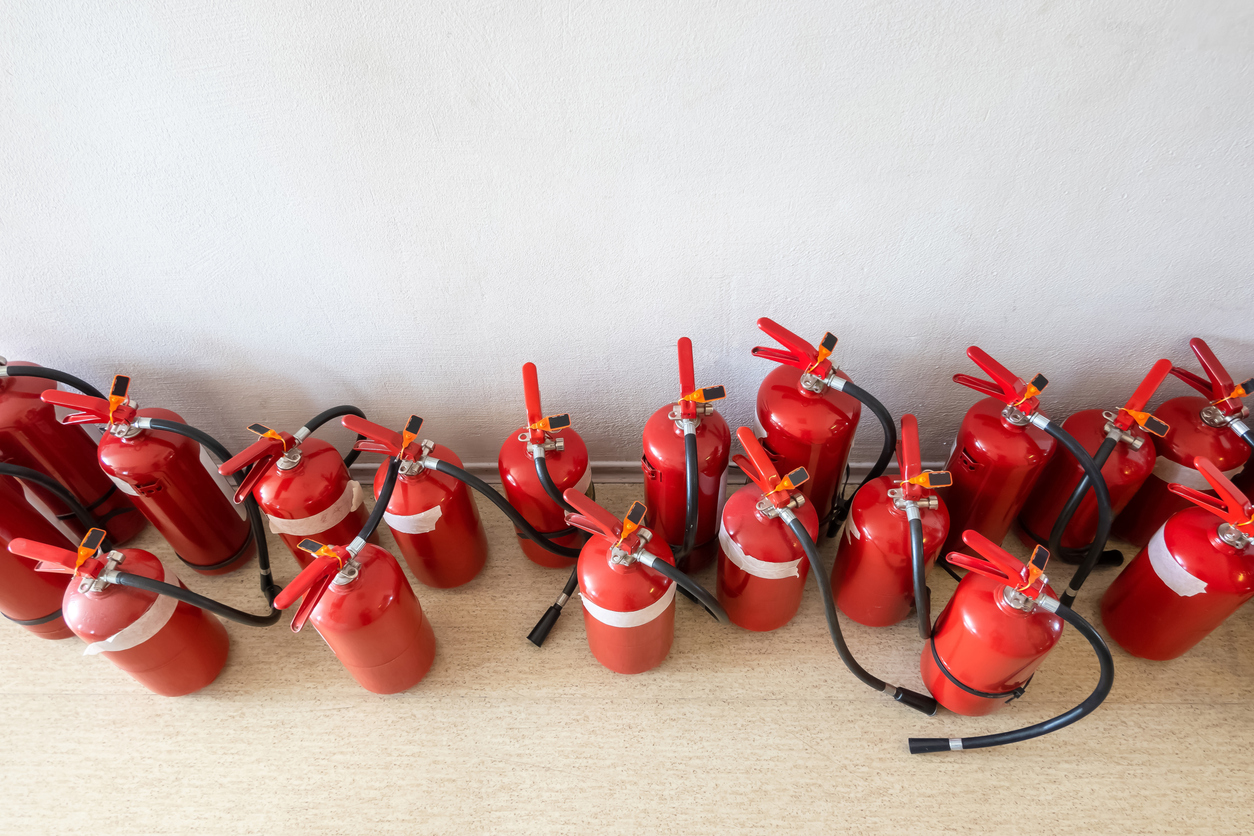When it comes to fire safety, your fire extinguisher is one of the most critical tools at your disposal. Regular fire extinguisher inspections are essential to ensure these devices are ready to perform when needed. However, there are certain signs that indicate an immediate inspection is necessary. Ignoring these signs can compromise your safety and the safety of those around you. In this article, we’ll explore the key indicators that your fire extinguisher needs an urgent inspection and provide actionable steps to address these issues promptly.
Visible Damage or Corrosion
One of the most obvious signs that your fire extinguisher needs an immediate inspection is visible damage or corrosion. Check the exterior of the extinguisher for dents, cracks, or rust. These imperfections can weaken the integrity of the cylinder, making it unsafe or ineffective in an emergency.
Action Plan:
- Regularly inspect the physical condition of your fire extinguishers.
- If you notice any damage or corrosion, contact a professional for a thorough fire extinguisher inspection.
- Replace any extinguisher that is significantly damaged or corroded.
Missing or Damaged Safety Seals
Fire extinguishers are equipped with safety seals and tamper indicators to ensure they have not been used or tampered with. If these seals are missing or damaged, it could indicate that the extinguisher has been discharged or tampered with and may not be fully charged or operational.
Action Plan:
- Check the safety seals during your routine inspections.
- Schedule a professional fire extinguisher inspection immediately if seals are broken or missing.
- Replace the seals after each inspection to maintain integrity.
Low Pressure in the Gauge
The pressure gauge on your fire extinguisher is a critical component that indicates whether the extinguisher is properly charged. The needle should be in the green zone. If it is in the red zone, either too high or too low, the extinguisher may not function correctly when needed.
Action Plan:
- Regularly monitor the pressure gauge on your fire extinguishers.
- If the pressure is not in the green zone, arrange for a fire extinguisher inspection right away.
- Refill or replace extinguishers that do not maintain proper pressure.
Blocked or Clogged Nozzle
A blocked or clogged nozzle can prevent the fire extinguisher from discharging its contents effectively. This issue can occur due to debris, insects, or corrosion inside the nozzle.
Action Plan:
- Check the nozzle for any obstructions during your routine inspections.
- Clean the nozzle regularly to prevent clogs.
- Schedule a professional fire extinguisher inspection if you find any blockages that cannot be cleared.
Expired Maintenance Tag
Fire extinguishers require regular maintenance and inspections, which are typically documented on a maintenance tag attached to the extinguisher. If the maintenance tag indicates that an inspection is overdue, it is crucial to schedule one immediately.
Action Plan:
- Review the maintenance tags on all fire extinguishers to ensure inspections are up to date.
- Schedule a professional fire extinguisher inspection if any tags are expired.
- Establish a routine maintenance schedule to prevent overdue inspections.
Leaking Content
If you notice any leaking content from your fire extinguisher, this is a clear sign that it needs immediate attention. Leaks can deplete the extinguisher’s contents, rendering it useless in an emergency.
Action Plan:
- Inspect your fire extinguishers for any signs of leakage.
- Schedule an urgent fire extinguisher inspection if you detect any leaks.
- Replace any extinguishers that have significant leaks.
Worn Out or Missing Labels
The labels on your fire extinguisher provide essential information, including instructions for use and details about the extinguisher’s type and maintenance history. Worn out or missing labels can make it difficult to use the extinguisher correctly in an emergency.
Action Plan:
- Check that all labels are legible and securely attached to the extinguisher.
- If labels are worn out or missing, replace them and arrange for a professional fire extinguisher inspection.
- Ensure new labels include all necessary information.
Inconsistent Weight
Each type of fire extinguisher has a specific weight when fully charged. If an extinguisher feels significantly lighter or heavier than it should, it may indicate a problem with its contents.
Action Plan:
- Familiarize yourself with the standard weight of your fire extinguishers.
- Weigh your extinguishers periodically to ensure they are within the expected range.
- Schedule a fire extinguisher inspection if you notice any discrepancies in weight.
Evidence of Tampering
Evidence of tampering, such as broken seals, loose parts, or missing pins, is a clear sign that your fire extinguisher needs an immediate inspection. Tampering can compromise the extinguisher’s functionality and reliability.
Action Plan:
- Regularly inspect your fire extinguishers for signs of tampering.
- Schedule a professional fire extinguisher inspection if you detect any evidence of tampering.
- Consider implementing security measures to prevent future tampering.
Unfamiliar Noises
When handling a fire extinguisher, you should not hear any unusual noises, such as hissing or rattling. These sounds can indicate internal damage or leaks.
Action Plan:
- Listen for any unfamiliar noises when inspecting your fire extinguishers.
- If you hear anything unusual, arrange for a fire extinguisher inspection immediately.
- Replace any extinguishers that exhibit signs of internal damage.
Past its Expiry Date
Fire extinguishers have a limited lifespan, usually between 5 to 15 years, depending on the type and manufacturer. Using an extinguisher past its expiry date can be risky, as its effectiveness may be compromised.
Action Plan:
- Check the expiry date on your fire extinguishers.
- Replace any extinguishers that are past their expiry date.
- Schedule a professional fire extinguisher inspection to confirm the condition of older units.
Stored in Improper Conditions
Fire extinguishers should be stored in a cool, dry place, away from direct sunlight and chemicals. Improper storage conditions can damage the extinguisher and affect its performance.
Action Plan:
- Ensure your fire extinguishers are stored in appropriate conditions.
- Relocate any extinguishers stored in unsuitable environments.
- Schedule a fire extinguisher inspection to assess any potential damage from improper storage.
Lack of Training
If your staff is not trained in using fire extinguishers, they may inadvertently damage them or render them ineffective. Proper training ensures that everyone knows how to handle and inspect fire extinguishers correctly.
Action Plan:
- Provide fire extinguisher training for all staff members.
- Include training on how to perform routine inspections and identify issues.
- Schedule regular refresher courses and professional fire extinguisher inspections.
Unfamiliar Fire Extinguisher Type
Using the wrong type of fire extinguisher for the fire can be dangerous. Ensure that the fire extinguishers you have are suitable for the types of fires you might encounter in your environment.
Action Plan:
- Identify the types of fires that could occur in your workplace.
- Ensure you have the appropriate type of fire extinguishers for these fires.
- Schedule a fire extinguisher inspection to confirm the suitability and condition of your extinguishers.
No Inspection History
If you have recently acquired a property or equipment with fire extinguishers and there is no record of past inspections, it is essential to schedule an inspection immediately to establish a baseline for future maintenance.
Action Plan:
- Review the inspection history of all fire extinguishers.
- Schedule a professional fire extinguisher inspection for any extinguishers with unknown or incomplete histories.
- Maintain detailed records of all future inspections.
Obstructed Access
Fire extinguishers must be easily accessible in an emergency. If they are blocked by furniture, equipment, or other obstacles, it can delay response times during a fire.
Action Plan:
- Ensure that fire extinguishers are unobstructed and easily accessible at all times.
- Conduct regular walk-throughs to check for any obstructions.
- Schedule a fire extinguisher inspection if accessibility issues have compromised your extinguishers.
Manual Handling Issues
If the extinguisher handle, pin, or other manual components are difficult to operate, it could indicate a mechanical issue that needs addressing.
Action Plan:
- Test the manual components of your fire extinguishers regularly.
- If any parts are difficult to operate, schedule a professional fire extinguisher inspection.
- Repair or replace any faulty components.
Incorrect Installation
Fire extinguishers should be installed according to manufacturer guidelines and local regulations. Incorrect installation can hinder their effectiveness and accessibility.
Action Plan:
- Review the installation guidelines for your fire extinguishers.
- Ensure they are mounted at the correct height and in appropriate locations.
- Schedule a fire extinguisher inspection to verify correct installation.
Environmental Exposure
Fire extinguishers exposed to extreme temperatures, moisture, or chemicals can degrade faster than those stored in ideal conditions. This exposure can lead to malfunctions or failures.
Action Plan:
- Assess the environmental conditions where your fire extinguishers are stored.
- Relocate extinguishers exposed to harsh conditions to safer environments.
- Schedule a fire extinguisher inspection to check for damage from environmental exposure.
User Feedback
If any staff members report issues or concerns with a fire extinguisher, it is essential to take their feedback seriously and investigate immediately.
Action Plan:
- Encourage staff to report any problems with fire extinguishers.
- Act promptly on any feedback by scheduling a professional fire extinguisher inspection.
- Address and resolve any reported issues to ensure safety.
Fire extinguishers are vital safety devices that require regular maintenance and inspections to ensure they function correctly when needed. By being vigilant and recognizing the signs that your fire extinguisher needs an immediate inspection, you can prevent potential disasters and keep your workplace safe. Schedule regular fire extinguisher inspections with professionals like Jim’s Fire Safety New Zealand to maintain the highest standards of fire safety.

Prioritize Professional Fire Extinguisher Inspection with Jim’s Fire Safety New Zealand
Do you need trained fire safety testing professionals to inspect your building’s fire safety equipment? Our team offers a comprehensive suite of fire safety inspection services to all types of businesses all around New Zealand.
All of Jim’s Fire Safety technicians are trained in both fire and electrical safety. We have everything you need for fire safety in one team, giving you peace of mind so that you do not have to unnecessarily face the risks of DIY fire safety inspection or testing. When you choose Jim’s Fire Safety New Zealand, you’re assured of meeting national requirements. You can make one booking with us and have your whole building secured. You no longer have to consult with a range of safety testing companies for your compliance needs. Just call Jim’s Fire Safety and be done.
Get a free quote on our fire extinguisher inspection and other fire safety services, or give us a call at 0800 454 654 to learn more.







